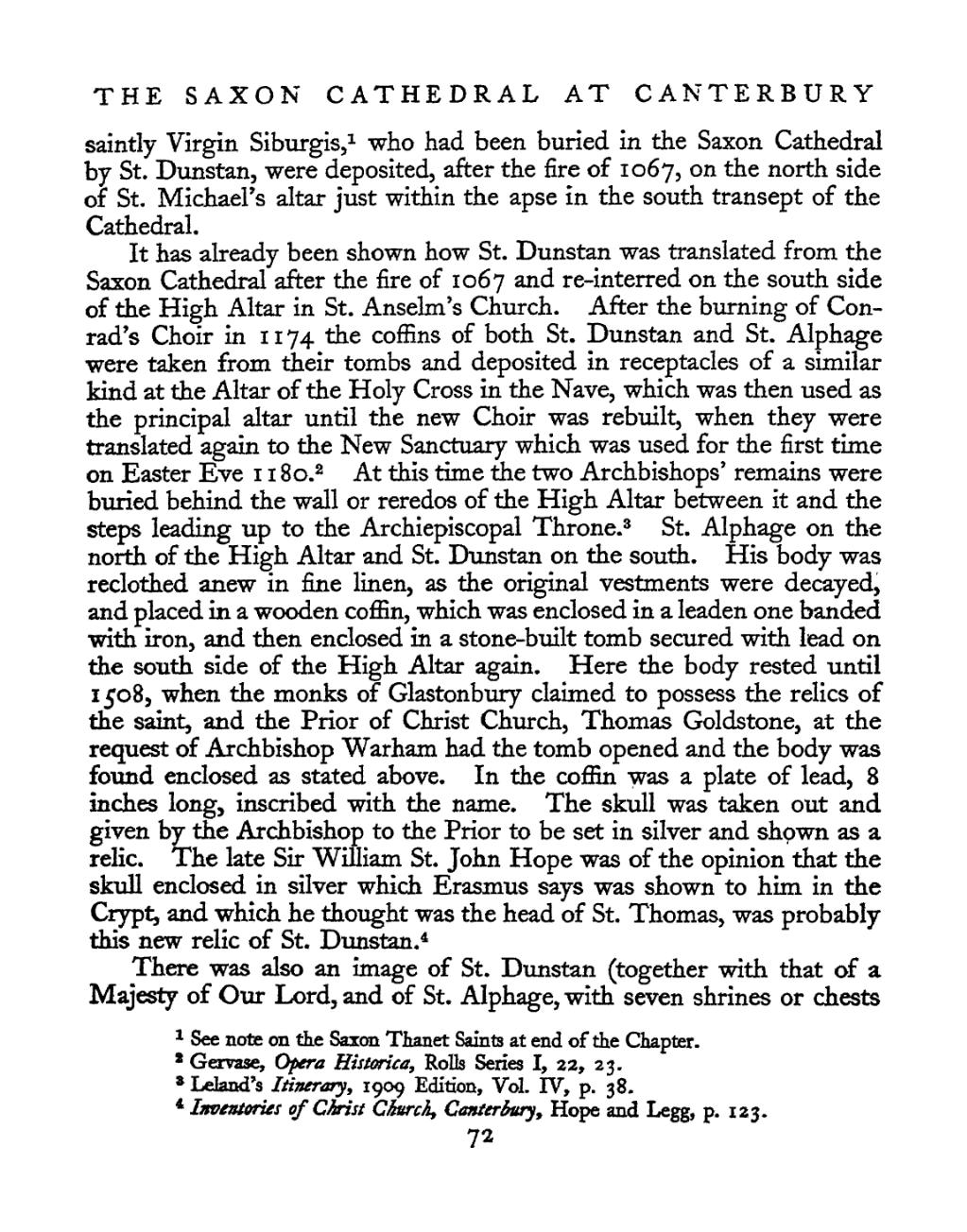THE SAXON CATHEDRAL AT CANTERBURY
saintly Virgin Siburgis,[1] who had been buried in the Saxon Cathedral by St. Dunstan, were deposited, after the fire of 1067, on the north side of St. Michael's altar just within the apse in the south transept of the Cathedral.
It has already been shown how St. Dunstan was translated from the Saxon Cathedral after the fire of 1067 and re-interred on the south side of the High Altar in St. Anselm's Church. After the burning of Conrad's Choir in 1174 the coffins of both St. Dunstan and St. Alphage were taken from their tombs and deposited in receptacles of a similar kind at the Altar of the Holy Cross in the Nave, which was then used as the principal altar until the new Choir was rebuilt, when they were translated again to the New Sanctuary which was used for the first time on Easter Eve 1180.[2] At this time the two Archbishops' remains were buried behind the wall or reredos of the High Altar between it and the steps leading up to the Archiepiscopal Throne.[3] St. Alphage on the north of the High Altar and St. Dunstan on the south. His body was reclothed anew in fine linen, as the original vestments were decayed, and placed in a wooden coffin, which was enclosed in a leaden one banded with iron, and then enclosed in a stone-built tomb secured with lead on the south side of the High Altar again. Here the body rested until 1508, when the monks of Glastonbury claimed to possess the relics of the saint, and the Prior of Christ Church, Thomas Goldstone, at the request of Archbishop Warham had the tomb opened and the body was found enclosed as stated above. In the coffin was a plate of lead, 8 inches long, inscribed with the name. The skull was taken out and given by the Archbishop to the Prior to be set in silver and shown as a relic. The late Sir William St. John Hope was of the opinion that the skull enclosed in silver which Erasmus says was shown to him in the Crypt, and which he thought was the head of St. Thomas, was probably this new relic of St. Dunstan.[4]
There was also an image of St. Dunstan (together with that of a Majesty of Our Lord, and of St. Alphage, with seven shrines or chests
- ↑ See note on the Saxon Thanet Saints at end of the Chapter.
- ↑ Gervase, Opera Historica, Rolls Series I, 22, 23.
- ↑ Leland's Itinerary, 1909 Edition, Vol. IV, p. 38.
- ↑ Inventories of Christ Church, Canterbury, Hope and Legg, p. 123.
72
